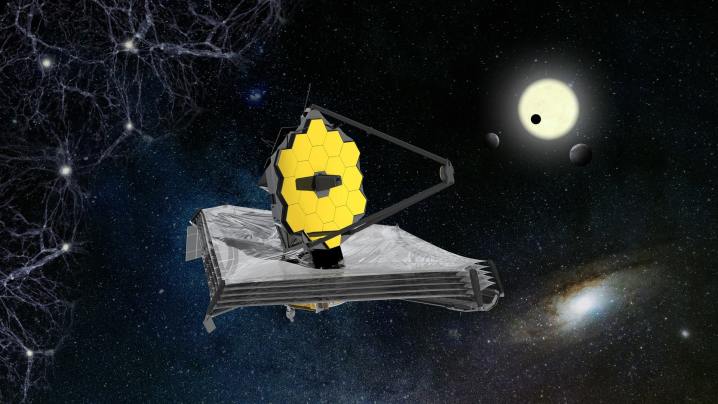
The Hubble Space Telescope is a beloved scientific institution, but at more than 20 years old it’s getting rather long in the tooth. That’s why NASA, the European Space Agency (ESA), and the Canadian Space Agency (CSA) are joining forces to create the James Webb Space Telescope, a cutting-edge astronomy instrument that is set to launch later this year.
The instruments on board James Webb will enable science discoveries beyond anything possible right now, such as looking at exoplanets to see if they have atmospheres and whether any might be like Earth.
But exoplanet atmospheres aren’t the only topic that Webb will be researching. This week, NASA officials have announced the roster of scientific programs which the telescope will study in its first year. This includes programs to research how stars are formed, research into the climate and composition of bodies like planets and comets within our own solar system, and even programs to study the formation of the universe itself by looking for the earliest galaxies.
“The initial year of Webb’s observations will provide the first opportunity for a diverse range of scientists around the world to observe particular targets with NASA’s next great space observatory,” said Dr. Thomas Zurbuchen, Associate Administrator for the Science Mission Directorate at NASA in a statement. “The amazing science that will be shared with the global community will be audacious and profound.”
All of these programs will be a part of Cycle 1, which is the name for the first year of the telescope’s science operations. In total 266 proposals were selected from a highly competitive pool of thousands, as many more researchers would like time on the telescope than is available. The committee in charge of the selection had to whittle down the proposals to the most scientifically valuable, and they ended up awarding 6,000 hours of time on the telescope to the various projects.
“We are opening the infrared treasure chest, and surprises are guaranteed,” said Dr. John C. Mather, Senior Project Scientist for the Webb mission and Senior Astrophysicist at NASA’s Goddard Space Flight Center in Greenbelt, Maryland. “How did the universe make galaxies, stars, black holes, and planets, and our own very special little Earth? I don’t know yet, but we are getting closer every day.”
You can see a full list of all the programs planned for Webb’s first year of operations here.
Editors' Recommendations
- James Webb observes extremely hot exoplanet with 5,000 mph winds
- James Webb images capture the galactic winds of newborn stars
- The expansion rate of the universe still has scientists baffled
- This famous supernova remnant is hiding a secret
- See 19 gorgeous face-on spiral galaxies in new James Webb data



